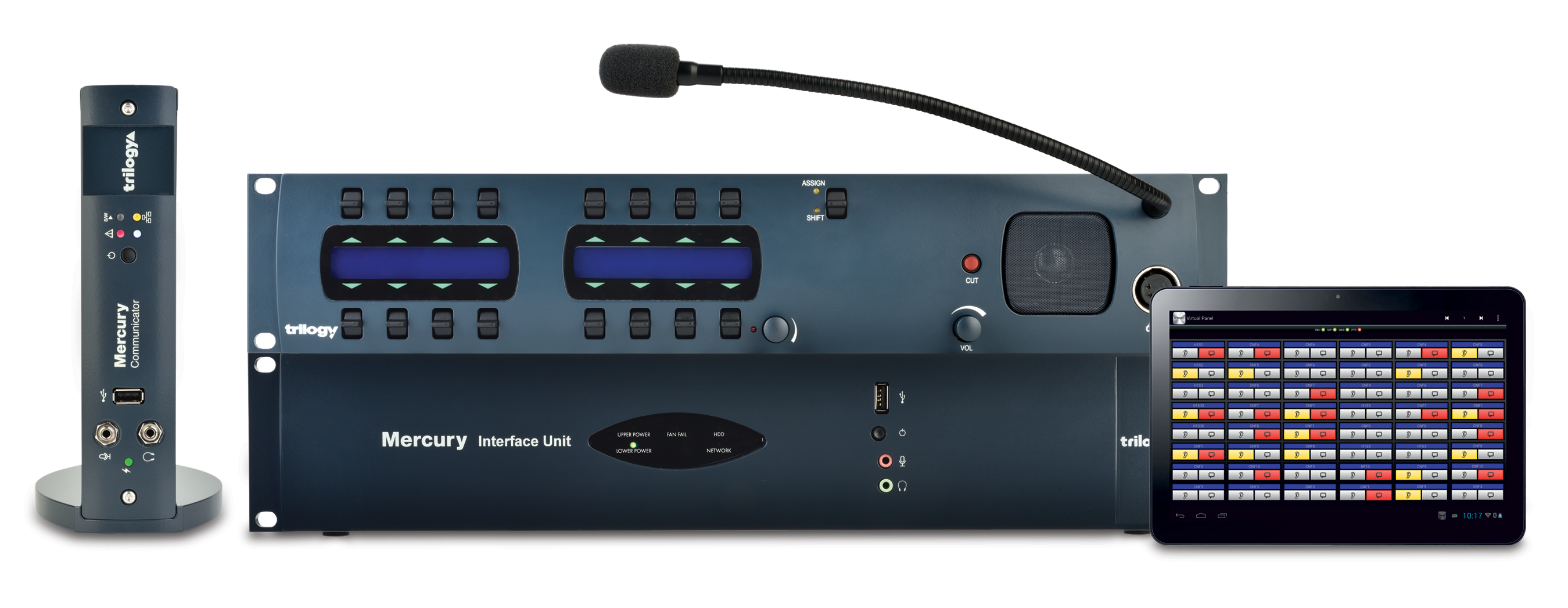
Mercury from Trilogy combines VoIP telephony with the power of a conventional digital matrix intercoms system to create a scalable, real-time communications network designed.
Mercury is a real-time intercom communications platform that enables multichannel full-duplex one-to-one, group and conference communications over LAN, WAN and Internet connections. Mercury also provides seamless interoperability with other commonly used voice communications systems.
Each Mercury system is comprised of one or more Mercury Interface Units (MIU) and/or Mercury Communicator Units (MCU). These devices, known as Mercury hosts, are equipped with 64 IP audio channels.
IP audio channels are dynamically allocated to support two-way communications over an IP network. Multiple IP channels can be used simultaneously to conduct communications with any combination of other Mercury hosts distributed across the enterprise.
Communications can be further increased by deploying Mercury on multicast-enabled networks. Multicast conferencing makes it possible for hundreds of users to communicate using available bandwidth efficiently, to reduce potential capacity issues. Mercury also allows for the reservation of IP audio channels for use as static audio trunks or for emergency communications.